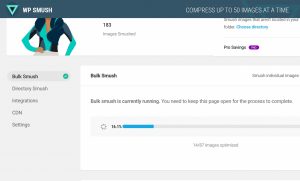We’re not always the kinds of folks that write blog posts tooting our own horn (case studies, on the other hand . . .) And honestly, who would want to read what we have to say if all we ever did was talk about how fantastic we are?
But this is one of those times that we have to break our own rules. 
Below we share the genius way David Isman, our Director & GM of Paid Search, found a way to save a client around $ 50,000.
And the best part? He used a tool you may have heard of before: Google Analytics.
BACKGROUND
One of our lead generation clients in the education space was looking to identify and target high-intent leads within their display retargeting efforts. By high-intent leads, they specifically wanted to find people who were closer to making their final decision.
Their purpose was to make sure they were tailoring their message to their website visitors who would be more likely to follow through as a lead and enroll in one of their degree programs.
Isman and our client came up with two separate hypotheses to test using Google Analytics:
HYPOTHESIS #1: The more sessions a user had on the site, the more intent they showed. Therefore, they would be more likely to convert.
HYPOTHESIS #2: The more pages a user went to on the site in one session (also known as page depth), the more likely they were to convert.
After testing these theories, we found that at least one of the hypotheses were right. But first, let’s walk through the steps we took to get there.
GETTING GRANULAR WITH GOOGLE ANALYTICS
The ability to get highly specific data within Google Analytics (GA) is extensive.
Isman decided to test his beliefs of the client’s website users by utilizing a little known area in GA called “Traffic Segments.”

Within this field, you can select for items such as the number of sessions for a specific user or the extent of page depth a visitor spent while on your site. So as not to throw off your numbers, you can also exclude certain pages or certain types of visitors. That way, if your employees are also going to your website to request time off or find a link, they won’t be counted as part of the overall total.
Once Isman had selected for both number of sessions and page depth, as well as put in the necessary exclusions, he could sit back and wait to see what the data revealed.
RESULTS
Number of Sessions
The original theory was that the more sessions someone had with the website, the more likely they were to convert.
Yet, when Isman looked at the data, it revealed something much different. In fact, conversion rates sharply decreased when the number of sessions went up.
A potential lead who visited the website between 1 to 4 times had a conversion rate close to 2%.
Once those session visits reached 5 to 10 times, the conversion rate was cut in half, to close to 1%.
And if someone kept coming to the website 11 times or beyond, there was basically zero chance of them converting (at least statistically speaking).

You’d have to do a fair amount of digging to figure out why someone might come to the site 11 times or more. We suspect they are unsure in their decision/just doing more research, or current students using other browsers than the ones they typically use to access the student portal. Either way, the high level intel shows that the more times they visit the site, the less likely they are to take the plunge.
This flew in the face of the idea that someone who repeatedly visit a website would be more likely to convert. But the numbers proved that wrong.
Page Depth
The other theory Isman had had was that the more pages a potential lead visited within the same session, the more likely they were to convert.
This time, his prediction was spot on.

When someone visited just one page on the website during a single session, the conversion rate was around 0.21%.
But if in that one session, they visited 10 or more pages, their chances of converting went up to at least 20% if not higher.
That represents a 100x increase in conversions!
WHAT YOU CAN LEARN FROM THIS
Always Test Your Theories
As mentioned, the two hypotheses tested only ended up having one winner. But the fact that Isman was able to test the theories without spending any extra money is significant.
Part of continually searching for high-intent leads from your various advertising channels means that you must be harvesting ideas and strategies so that you are always optimizing your ad spend. And while sometimes you will have to spend to find out answers to your questions, Google Analytics provides a tool that allows you to test your theories without spending money.
Additional Analysis Makes Your Ad Spend Stronger
Another important takeaway from this is that this kind of testing can help you focus your ad dollars efficiently. If you know that those users who visit 10 or more pages in one session are more likely to convert, you can focus your retargeting display spend in their direction.
By targeting the users that give you the biggest ROI, your overall ad spend will become more effective. You’ll know when to bid more on sources of high intent leads and bid lower on sources that generate leads whose intent is less clear.
CONCLUSION
Even though GA isn’t rare, it is rare for many advertisers to take the time and effort to dive into all of its features and the intelligence it has to offer.
Yet, the time and effort are worth it to help you efficiently identify and retarget high intent users.
And at the end of the day, who doesn’t want to spend their money where it will have the greatest impact?
Digital & Social Articles on Business 2 Community
(38)









